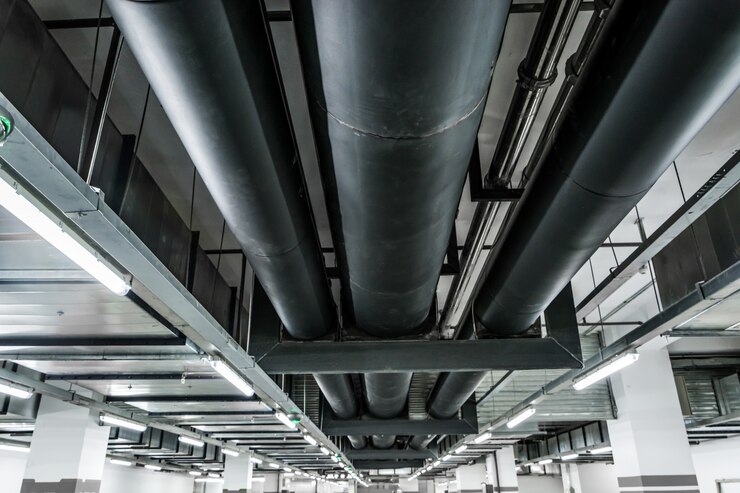The Definitive Guide to Trench Drain Systems

Flooding is not a pleasant experience. Whether it is your house, business, or car. If this has ever happened to you, you must be very eager to find a solution.
Many people think that drain trenches are only helpful in preventing flooding in low-lying areas such as the basement of a house. While this is true, trench drains can be used for several other applications.
Trench drains were initially used to drain excess water from low-lying areas to prevent flooding during heavy rainstorms.
Today, they are vital for limiting the risk of flooding and water damage to structures and preventing standing or running water from pooling and flowing onto properties, roads, parking lots, sidewalks, and other public areas.
They also intercept runoff where it is most likely to occur through metal barriers placed in trenches dug at right angles across paved. In residences, trench drain systems are often installed to protect basements and crawl spaces. Here’s a definitive guide to trench drain systems.
Significant Components of Trench Drain Systems
Trench drain systems consist of two major components, a drain, and a catch basin. The gutter is the underground portion of the system and is composed of piping that runs perpendicular to the direction of the flow of water.
It channels runoff into the catch basin, located at the bottom of a hill or other natural depression. The collected water is then safely discharged into an underground storm sewer or other drainage system.
Catch basins are made from concrete, stainless steel, cast iron, plastic, or fiberglass. They can also be made from recycled materials such as corrugated steel drums and large plastic containers.
They come in various shapes and sizes and are designed to accommodate the amount of water that will collect in them. Catch basins can be buried below ground level or installed above grade.
If the basin is above ground, it should be covered with an access lid or grating to prevent debris from flowing into it.
Trench drain piping is usually made from PVC, ABS, CPVC, or copper. The piping is usually encased in concrete with a smooth interior finish to prevent clogging by sediment.
The trench drain piping must be sized adequately based on the amount of water that will flow into it.
That’s why it should be left for a qualified engineer who can determine the proper sizing based on site-specific factors such as soil type, site layout, and the amount of water that will flow into the system.
Types of Trench Drain Systems
There are three different types of trench drain systems. These include concrete trench drains and high-density polythene trench drains.
1. Concrete Trench Drains
Concrete drains are typically made from concrete cast into a pipe about two inches in diameter and about three inches deep. Concrete is poured into the trench drain piping and then allowed to set up.
The concrete must be cured for at least six months before being used. After the curing period, the concrete surface is smooth and waterproof.
Trench drains with a smooth interior finish should not have any holes or crevices that can collect water, resulting in clogging of the system over time.
2. High-Density Polythene Trench Drains
High-density polythene trench drains are made from high-density polythene pipe liners about two inches in diameter and about six inches deep.
The piping is placed into the trench drain system and filled with water-resistant, lightweight sand or crushed limestone material.
Related Resource:
Advantages of Trench Drain Systems
Jonite trench drain systems effectively drain water away from your home. They are also very durable and easy to install.
They require little maintenance and have a relatively small footprint, making them an attractive option for homeowners who want to take advantage of modern technology in their homes but don’t want to deal with large, complicated systems that require costly maintenance.
In addition, they are incredibly versatile. They can be used to drain water from your garage, a utility room, or any other area where you need to keep water out of the building.
Disadvantages of Trench Drain Systems
Trench drain systems are not ideal for larger, more complex projects. The piping is usually not large enough to handle a massive volume of water. They may not also provide the best drainage in all situations.
For example, if your house has a slope, trench drains can cause the water to pool at the bottom, which can be a safety hazard if you have children or pets in your home.
Also, some homeowners may find a “water hammer” effect when using trench drain systems because of their design. Water moves through the system quickly when it is first turned on but then slows down when it reaches the bottom of the trench.
This can cause a loud hammering sound in your home, which can be uncomfortable for those living there.
The Bottom Line
Trench drain systems are ideal for every home and are an effective and affordable way to take advantage of modern technology.
If you need a drain system for your home but can’t afford to install a large plumbing system, joint trench drains may be the perfect solution for you.
Read Also:













Leave A Reply